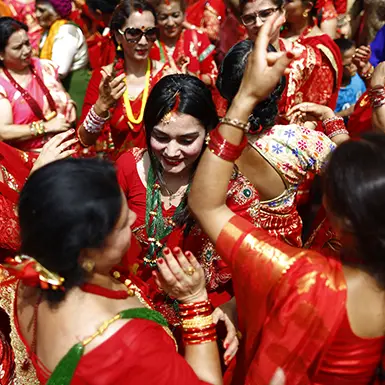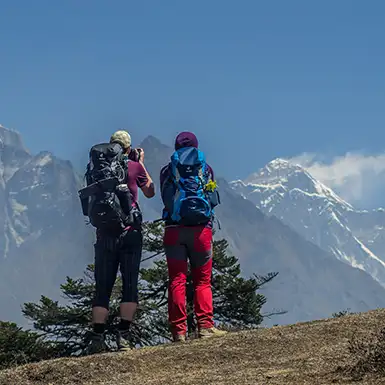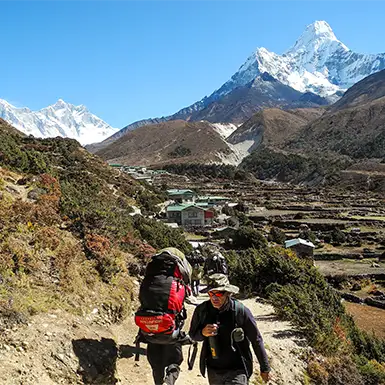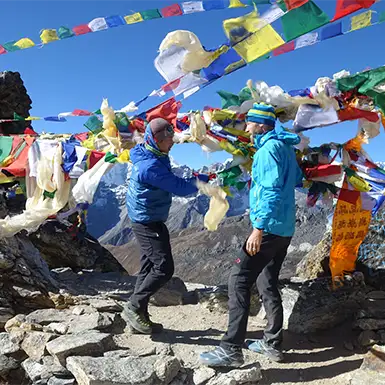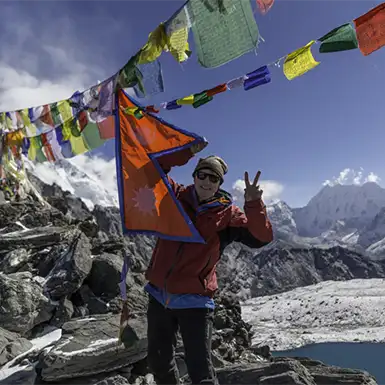Haritalika Teej stands out as a profound Hindu festival that women predominantly celebrate across Nepal and some regions of India. Typically held in August or early September, this event honors Goddess Parvati and her sacred union with Lord Shiva. “Haritalika” combines the words “Harit” (abduction) and “Aalika” (female friend), reflecting the mythological tale where Goddess Parvati’s friends whisk her away to forestall her marriage to Lord Vishnu, her heart set on Lord Shiva. This festival marks her unwavering commitment and eventual reunion with him.
During Haritalika Teej, women undertake fasts, conduct rituals, and pray fervently, hoping for marital bliss and happiness. Known also as “Hariyali Teej” in some locales, the festival celebrates the lushness brought by the monsoon, uniting women in joy, camaraderie, and spiritual introspection as they honor their devotion to Lord Shiva and Goddess Parvati.
Significance of Haritalika Teej Among Women in Hindu Culture
Haritalika Teej transcends simple religious practice to celebrate womanhood, marital happiness, and spiritual dedication. The festival’s significance in Hindu culture emerges clearly through several pivotal practices:
- Fasting for Marital Bliss: Women commit to a rigorous fast, often previously even water (“Nirjala Vrat”), to secure their husbands’ health and longevity. Unmarried women also participate, hoping the fast will lead them to a desirable partner.
- Haritalika Puja: This ritual forms the core of the celebration. Devotees lavishly adorn Goddess Parvati and Lord Shiva idols with red attire, offering fruits, flowers, and sweets to mirror their profound reverence and love for their life partners.
- Cultural Bonding: Teej beckons women to don their finest red saris and engage in songs, dances, and storytelling, fostering a robust sense of community and sisterhood.
- Spiritual Cleansing: Many see this festival as a chance for spiritual renewal, using fasting and prayer to cleanse the soul and strive for spiritual advancement.
- Celebration of Nature: Also termed “Hariyali Teej,” the festival heralds the monsoon’s greenery, reflected in the vibrant green bangles and apparel women wear during the festivities.
- Expression of Faith: The festival deeply embodies faith and devotion. Women trust that their sincere observances will win them Goddess Parvati’s blessings, ushering happiness and prosperity into their marital lives.
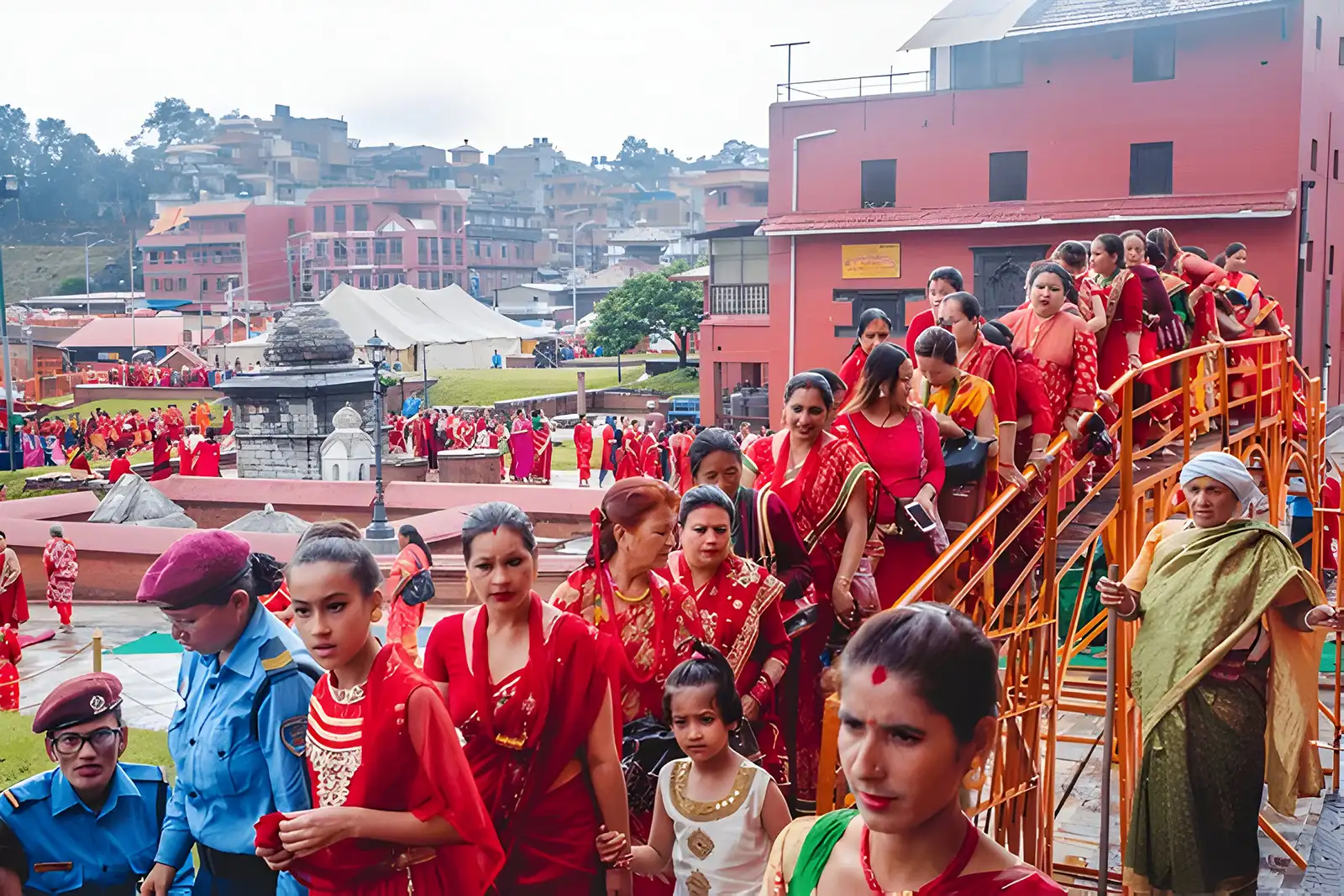
Unveiling the Tapestry of Haritalika Teej: A Journey Through Myth and Scripture
Haritalika Teej, a vibrant festival cherished by Hindu women, particularly in Nepal and parts of India, boasts a rich historical tapestry interwoven with mythology and religious significance. Let’s explore the origins of this auspicious occasion, its mythological roots, and its importance in Hindu scriptures.
Mythological Origins: The Tale of Parvati’s Devotion
The festival’s name, “Haritalika,” derives from a captivating legend. “Harit” signifies “abduction,” and “aalika” denotes “female friend.” The story revolves around Goddess Parvati’s unwavering determination to marry Lord Shiva.
- Parvati’s father wished for her to wed Lord Vishnu.
- Parvati’s friend secretly took her to a dense forest to thwart his plans.
- Parvati performed rigorous penance there, surviving on only leaves and fruits, to win Lord Shiva’s heart.
- Her unwavering devotion and steadfastness finally moved Lord Shiva, and he granted her wish, marrying her on the third day of the bright half of the Hindu month of Bhadrapada.
Scriptural Significance: Echoes in Hindu Texts
Various Hindu scriptures highlight the Teej Festival’s importance, further establishing its significance in the religious and cultural fabric.
- The Padma Purana narrates the story of Parvati’s penance and her eventual marriage to Lord Shiva, highlighting the significance of devotion and perseverance.
- The Shiva Purana describes the festival as a day of great spiritual significance when devotees can attain special blessings from Lord Shiva and Goddess Parvati.
- The Bhavishya Purana mentions women’s observance of this festival and emphasizes its role in fostering marital harmony and happiness.
Haritalika Teej in Contemporary Times: A Living Tradition
Haritalika Teej has evolved and adapted over the centuries, reflecting the changing social and cultural landscape. While its essence remains unchanged, the festival has incorporated regional variations and contemporary practices.
- In Nepal, Haritalika Teej is a three-day celebration of fasting, singing, dancing, and feasting. Women wear red attire, symbolizing marital bliss and prosperity.
- In parts of India, women observe the festival with similar enthusiasm, engaging in elaborate rituals and ceremonies. The fasting tradition remains central, underscoring women’s unwavering devotion and commitment.
Celebration Details of Haritalika Teej
Haritalika Teej, a religious festival revering Goddess Parvati, is immensely popular among Hindu women, primarily in Nepal and certain regions of India. Traditional rituals, devotional practices, and cultural expressions lead to a unique celebration in various areas.
Rituals and Customs: Honoring the Divine
At the heart of Teej lies a series of sacred rituals and customs, each imbued with deep symbolism and devotion:
- Fasting: The festival is marked by a strict day-long fast observed by women, symbolizing their unwavering devotion and commitment to their husbands. They abstain from food and water, seeking blessings for their spouse’s well-being, longevity, and prosperity.
- Prayer Rituals: Women gather in temples or homes to pray to Goddess Parvati and Lord Shiva. They sing devotional songs, recite sacred mantras, and perform traditional puja ceremonies. Spiritual enthusiasm and reverence fill the atmosphere.
- Ceremonial Gatherings: Teej is an occasion for women to foster solidarity and celebrate their collective identity. They gather in large groups, adorned in vibrant red attire, to sing, dance, and share stories. These gatherings foster a sense of community, sisterhood, and mutual support.
- Mehendi and Shringar: Women adorn their hands and feet with intricate mehendi designs, symbolizing beauty, auspiciousness, and marital bliss. They also dress in their finest clothes and jewelry, enhancing the festive spirit.
- Feasting and Merriment: Women celebrate the end of their fast with a sumptuous feast shared with family and friends. The festive meal includes a variety of traditional dishes, sweets, and delicacies. Joy, laughter, and celebration fill the atmosphere.
Regional Variations: A Tapestry of Cultural Expressions
While the essence of the Teej Festival remains intact, unique regional variations during the festival celebrations reflect the cultural diversity of Nepal and India.
Nepal:
- Haritalika Teej is a three-day festival in Nepal.
- On the first day, called “Dar Khane Din,” married girls host an elaborate party and meet at their houses.
- The second highlight is the day of fasting, when women go to temples to pray to Goddess Parvati.
- The third day, “Rishi Panchami,” is dedicated to purification and seeking forgiveness for unintentional sins.
India:
- Women in Rajasthan celebrate “Hariyali Teej,” which is marked by hammocks decorated with flowers and colors.
- Women in Bihar celebrate the monsoon season by singing and dancing to folk songs during “Kajri Teej.”
- In Uttar Pradesh, “Hartalika Teej” is celebrated with great devotion, where women perform elaborate puja rituals and fast for the well-being of their husbands.
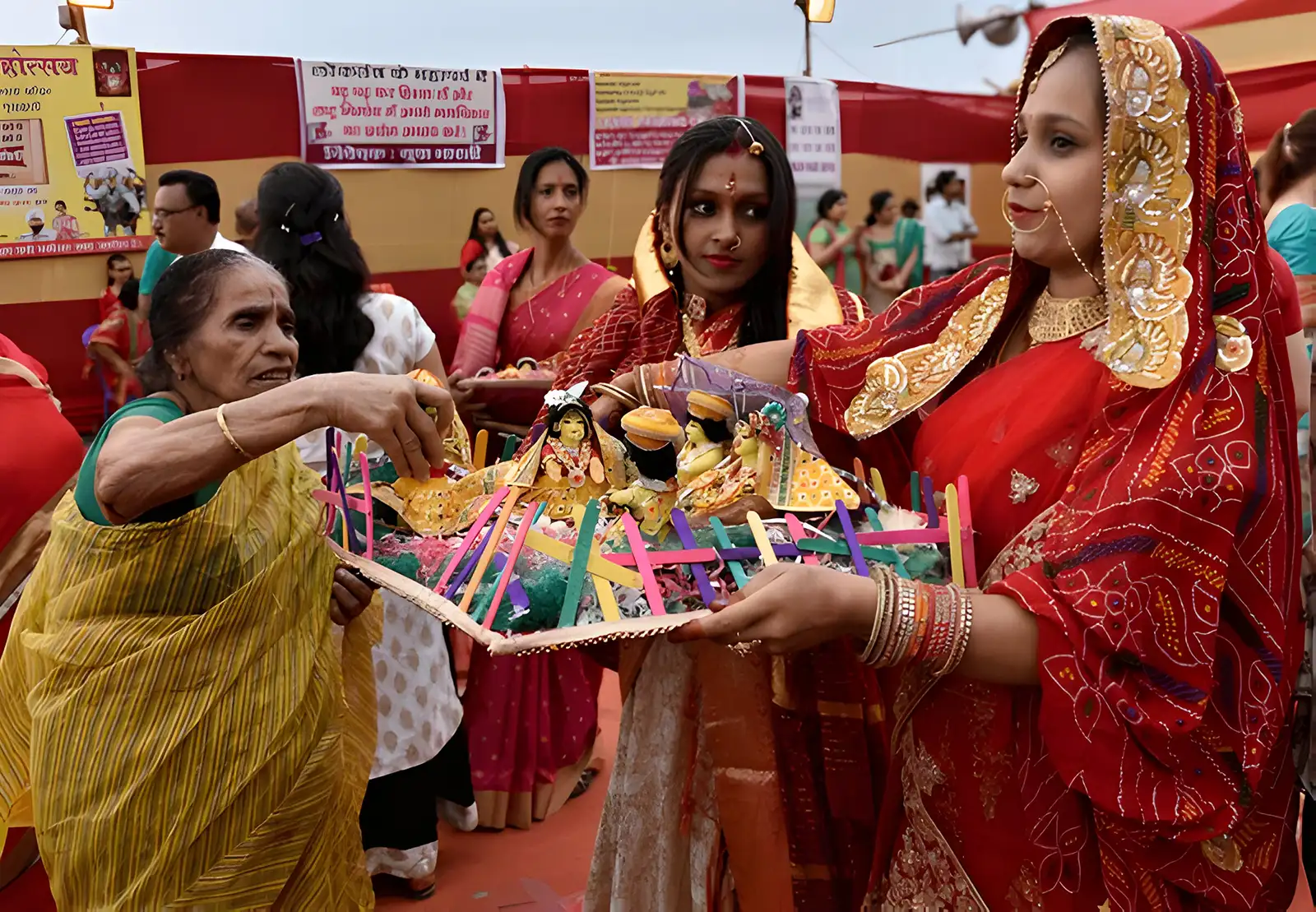
Cultural Significance of Haritalika Teej
Hindu culture deeply loves the festival of Haritalika Teej, which people celebrate with devotion and passion. It is mainly a woman’s event in that it is observed only by the female gender, and it is of enormous importance spiritually and culturally. The festival stands for the joy of marriage, loyalty to one’s spouse, women’s empowerment, and togetherness among females. Now, let us see how this festival represents these values.
Celebrating Marital Bonds and Devotion
Haritalika Teej beautifully intertwines with the celebration of marriage and the values of fidelity and devotion.
- The Fast: A Testament of Love: The strict fast women observe during this festival showcases their unwavering commitment to their husbands. They pray for their spouse’s long, healthy life and prosperity by providing food and water.
- Parvati’s Legend: An Inspiration: The festival’s mythological roots in Goddess Parvati’s unwavering devotion to Lord Shiva further highlight the importance of marital fidelity and perseverance.
- Red Attire: A Symbol of Love: Red attire adorns women during Teej and symbolizes marital bliss, love, and prosperity. It visually represents the sacred bond shared between husband and wife.
- Prayers and Offerings: Nurturing the Bond: Women offer prayers and perform rituals, seeking blessings for a fulfilling married life. This practice underscores the sanctity of marriage and the woman’s vital role in its growth.
Empowerment and the Spirit of Sisterhood
Beyond marital themes, this festival serves as a platform for female empowerment and solidarity.
- A Day of Self-Expression: The festival gives women a much-needed break from their daily routines, allowing them to freely express themselves through singing, dancing, and sharing stories. It’s a celebration of their individuality and shared experiences.
- Sisterhood and Support: Women gather in large groups, fostering a sense of community and belonging. They share their joys and sorrows, provide mutual support, and celebrate their collective strength.
- Celebrating Womanhood: This festival honors women’s inherent power, resilience, and determination. It reminds us of their indispensable societal role and ability to triumph over challenges.
- Preserving Traditions: The festival actively maintains and transmits cultural heritage across generations. Women enthusiastically pass down songs, dances, rituals, and stories, ensuring their relevance and continuation.
Haritalika Teej in the Modern Age: Adapting Tradition to Contemporary Life
The celebration of Happy Teej is steeped in tradition but has also found its way into changing times. The formulation still conserves its originality, blending modernity into traditional forms. In this article, we will see how people celebrate this festival nowadays.
Changes in Observance: Embracing Flexibility and Convenience
Modern influences have brought about subtle yet significant changes in the observance of this festival.
- Flexible Fasting: While fasting remains central to the festival, many women now opt for partial or modified fasts, accommodating their health and lifestyle needs. They may consume fruits, juices, or specific types of food while maintaining the spirit of devotion.
- Technological Integration: Technology is vital to celebrate Haritalika Teej without any misses. The women use social networking sites and video calls to connect with their relatives and friends, sending them greetings or participating in online get-togethers.
- Evolving Rituals: While traditional puja rituals remain essential, many families adopt more straightforward and time-efficient practices. They focus on the essence of devotion and offer prayers to suit their modern lifestyles.
- Greater Inclusivity: This festival is becoming increasingly inclusive, with women from different backgrounds and communities participating in the celebrations. The festival is seen as a unifying force, transcending social and cultural barriers.
Public Events and Gatherings: Celebrating in the Community
In addition to private celebrations, Haritalika Teej has taken on a public dimension, with large-scale events and gatherings occurring in various cities and towns.
- Teej Fairs and Melas: During these exciting festivals, people share traditional music, dancing, and tales. They serve as an avenue through which women can come together, exhibit their abilities, and commemorate what is mutual among them.
- Public Programs and Concerts: Many organizations and communities host special events and concerts dedicated to Haritalika Teej. These events feature renowned singers, dancers, and artists, creating a festive atmosphere and promoting cultural exchange.
- Community Feasts and Gatherings: During this festival, public parks and community halls become venues for large-scale feasts and gatherings. Women from different neighborhoods come together to share food, sing, dance, and celebrate the festival’s spirit of unity and togetherness.
- Social Media Campaigns and Online Celebrations: The digital age has also brought a new wave of Haritalika Teej celebrations. Social media platforms are abuzz with greetings, photos, and videos related to the festival. Online communities and groups organize virtual events and discussions, connecting women across geographical boundaries.
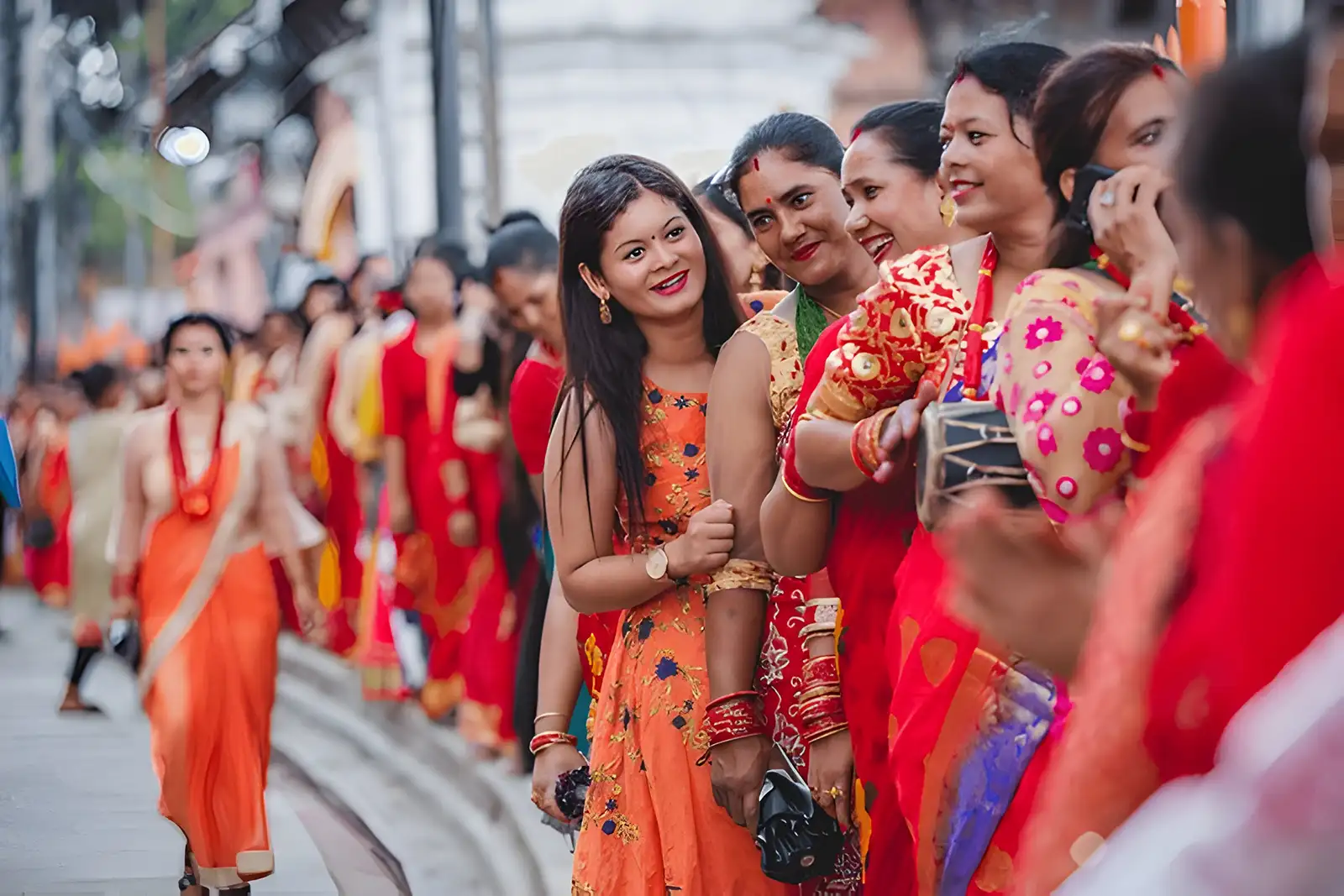
Personal Stories and Heartfelt Experiences
Haritalika Teej is more than just a festival; it is a profoundly personal and spiritual experience for many women. Through their stories and reflections, we can better understand this vibrant celebration’s emotional and cultural significance. Below are some personal anecdotes and insights highlighting what this festival means to those who observe it.
The Importance of Fasting and Prayer
- A Mother’s Devotion: “Every year, Haritalika Teej brings me closer to my husband and family,” says Sunita, a mother of two from Kathmandu. “Fasting on this day is my way of showing love and commitment to my husband. Though the fast is challenging, it fills me with peace and satisfaction. My prayers during the Haritalika Puja will bless our home with happiness and prosperity.”
- A Young Woman’s Perspective: Anju, a young woman from Jaipur, shares her thoughts: ” Teej is my favorite festival. I have watched my mother and grandmother observe it with such dedication, and now, I, too, carry on this tradition. The fast reminds me of the strength and resilience of women in our culture. It is not just about seeking blessings for a good marriage but also about self-discipline and spiritual growth.”
Celebrating Togetherness and Community
- A Sense of Sisterhood: “Happy Teej is a day I eagerly await each year,” says Rekha, a school teacher from Lucknow. “It is a time when all the women in my family come together. We sing, dance, and share stories from our lives. The festival strengthens our bonds and allows us to support and uplift each other. It is not just about the rituals; it’s about celebrating our unity as women.”
- A Cultural Connection: Mira, a Nepali woman living in the United States, reflects on how the festival helps her reconnect with her roots. “Living away from home, this festival holds a special place in my heart. Celebrating it here with my community reminds me of the vibrant festival of Nepal. We celebrate a small Haritalika puja and share traditional food.” We’re out of touch with our culture.” And it reminds us of our values.”
Navigating Challenges and Embracing Change
While Haritalika Teej remains a vibrant and cherished festival, it is not without its challenges and criticisms in contemporary times. Acknowledging these issues and understanding their impact on the festival’s observance is essential.
Debates Over Traditional Practices
- Strict Fasting: The tradition of observing a rigorous fast, abstaining from food and water, has faced scrutiny in recent years. Concerns have arisen about its potential health implications, particularly for women with existing medical conditions or those who are pregnant.
- Gender Roles and Expectations: Some critics argue that the festival reinforces traditional gender roles and expectations, placing undue pressure on women to conform to societal norms. The emphasis on marital devotion and the woman’s role in ensuring her husband’s well-being can perpetuate patriarchal structures.
- Exclusivity: While this festival celebrates womanhood, some argue that it can exclude women who are not married or do not conform to traditional gender roles.
Commercialization of the Festival
- Consumerism: Like many festivals, Haritalika Teej has witnessed a degree of commercialization. The focus on elaborate rituals, expensive attire, and lavish feasts can create financial pressures and detract from the festival’s spiritual essence.
- Media Influence: Popular media portrayals of this festival can sometimes perpetuate unrealistic beauty standards and consumerist ideals, further contributing to the festival’s commercialization.
Navigating the Challenges
While acknowledging these challenges, it’s essential to recognize that Haritalika Teej is a dynamic festival that has evolved. It is capable of adapting to contemporary sensibilities while preserving its core values.
- Flexible Observance: Encourage women to prioritize their health and well-being during the festival. If necessary, opt for modified fasts or alternative ways to express devotion.
- Reframing Traditions: Emphasize the empowering aspects of Teej, such as celebrating female strength, resilience, and community. Focus on the festival’s ability to foster connections and support among women.
- Inclusivity: Encourage a more inclusive approach to Teej, welcoming all women regardless of marital status or gender identity.
- Mindful Consumption: Resist the pressure to overspend on elaborate rituals and attire. Focus on the spiritual essence of the festival and celebrate in a meaningful and sustainable way.
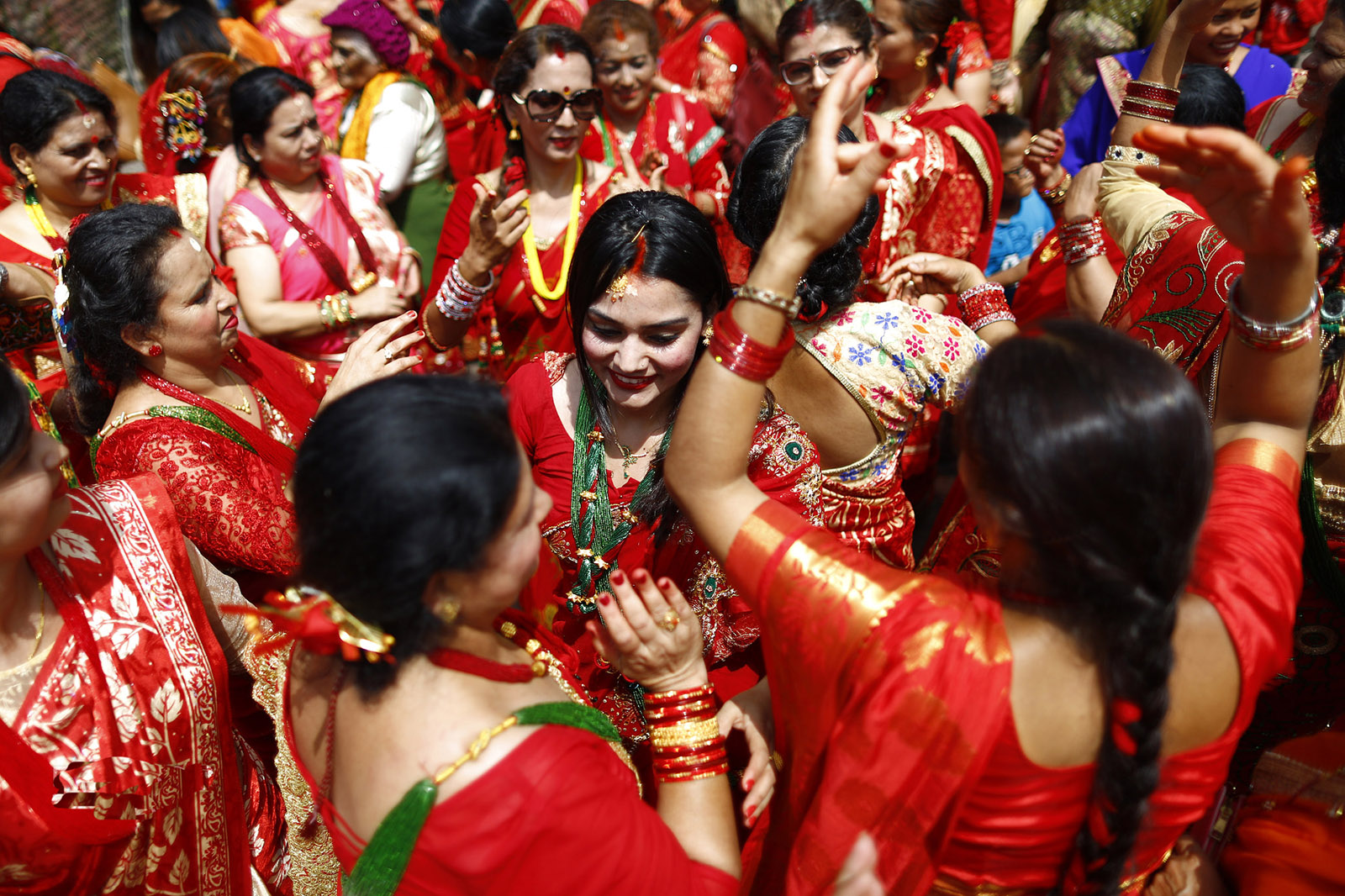
Timeless Celebration of Devotion, Empowerment, and Community
Nepal and parts of India are culturally rooted places, and Haritalika Teej is one traditional festival celebrated here for centuries. In today’s world, it has not lost its significance. It exists because people persistently hold on to moral values like devotion, loyalty, or female power, even if the face of life changes.
A Festival of Multifaceted Significance
- Upholding Marital Bonds: This festival powerfully reminds us of the sacredness of marriage and the importance of nurturing a loving and fulfilling relationship. The fast undertaken by women symbolizes their unwavering commitment to their partners, echoing the legendary devotion of Goddess Parvati to Lord Shiva.
- Celebrating Feminine Strength: The festival is a testament to women’s resilience, determination, and unwavering spirit. It offers a platform to celebrate their unique identity, express their creativity, and showcase their talents. The gatherings and celebrations foster a sense of sisterhood and empower women to embrace their strength.
- Preserving Cultural Heritage: This festival plays a vital role in keeping the flame of tradition alive. The passing down of rituals, songs, dances, and stories ensures the continuity of cultural heritage, connecting generations and fostering a sense of belonging.
- Adapting to Modernity: This festival has shown remarkable adaptability while remaining deeply rooted in tradition. Modern influences have led to flexible fasting practices, technological integration, and inclusive celebrations. The festival continues to evolve while remaining true to its essence.
Haritalika Teej in the 21st Century: A Beacon of Hope and Unity
Today’s setting reveals Happy Teej as more than just a religious festival. It is simply love, devotion, and power for all women. In our contemporary world, where life has become so complicated, this festival is therapy, reminding us to keep the old traditions.
- Strengthening the bond: Hari Talika Teej brings families and communities closer together. Shared experiences of communal fasting, prayer, and celebration create unity and inclusion.
- Inspiring Generations: The festival’s messages of commitment and resilience continue to inspire generations of women. It motivates them to acknowledge their strengths, overcome challenges, and strive for a fulfilling life.
- Promoting Cultural Exchange: The diverse regional variations in celebrating this festival showcase the rich cultural tapestry of Nepal and India. The festival is a cultural exchange and appreciation platform, fostering understanding and harmony.
Happy Haritalika Teej: A Celebration of Life and Love
As we celebrate Haritalika Teej, embrace its timeless traditions while adapting them to our contemporary lives. Let us honor the spirit of devotion, cherish the bonds of love, and empower women to shine brightly. Happy Teej to all!
